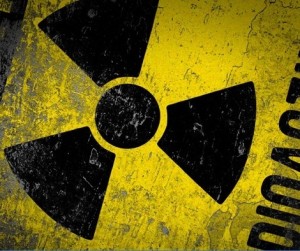 But in reality that's not so anymore for Japans first spaceman Mr. Akiyama. Akiyama was a journalist with Tokyo Broadcasting System Inc., when he flew on the Russian Soyuz spacecraft in 1990. After retiring Akiyama moved to Fukushima. Akiyama have been living in Fukushima for 16 years, he was initially attracted to Fukushima because of the abundant nature in the prefecture. So much so he decided to buy farmland and build his house there.
But in reality that's not so anymore for Japans first spaceman Mr. Akiyama. Akiyama was a journalist with Tokyo Broadcasting System Inc., when he flew on the Russian Soyuz spacecraft in 1990. After retiring Akiyama moved to Fukushima. Akiyama have been living in Fukushima for 16 years, he was initially attracted to Fukushima because of the abundant nature in the prefecture. So much so he decided to buy farmland and build his house there.After the Fukushima Disaster now everything has built over the years have been robbed from him.
Akiyama said:
"I used my retirement pay to buy the farmland and build a house,"
"I feel as though a robber has taken everything from me."
You can read this story and more at The Asahi Shimbun Japan Watch Site
On March 12, the day after the quake and tsunami, Akiyama packed a suitcase and fled his home in Tamura, Fukushima Prefecture, about 32 kilometers from the Fukushima No. 1 plant. As he drove in his truck, the radiation detection device that was hanging from his neck sounded an alarm.
"I bought the device for emergencies, but I never thought the day would come when it would be of help," Akiyama said.
While working for TBS, Akiyama served as chief of the Washington bureau. He stayed aboard the Mir space station in 1990 for one week, giving live reports each day to the nation. Five years later, he took early retirement and moved to the farm along the Abukuma mountain range.
He created a rice farm and also cultivated mushrooms that became his main source of income.
Using his truck on March 12, Akiyama first fled to a hot springs inn in the outskirts of Koriyama, Fukushima Prefecture, about 50 kilometers away. In the course of learning about organic farming, Akiyama made many friends and with their help he subsequently moved to Gunma and Nagano prefectures before settling at a rented house along the mountains in Fujioka, Gunma Prefecture.
Although his home in Tamura is slightly beyond the evacuation zone established by the central government, Akiyama said, "I cannot trust the central government's argument that it is therefore safe."
In October, he returned to see what happened to his home. A friend who lives nearby told him that cesium had been detected in the rice. Akiyama did not know what to say to his friend, who had continued with organic farming in order to produce safe rice, even though the cesium level was below government standards.
Having lost everything, Akiyama now feels that the anger he feels about the Fukushima nuclear accident is what keeps him going.
"The nuclear accident contaminated the expansive forests of Abukuma and spread radioactive materials into the Earth's atmosphere and waters," Akiyama said.
This autumn, he received an offer to teach at the Kyoto University of Art and Design. He plans to move to Kyoto Prefecture next year.
"I want to start from zero again and grow bamboo shoots," he said. "But Wakasa Bay is close by," Akiyama said referring to the region in neighboring Fukui Prefecture where several nuclear facilities, including the Oi and Mihama nuclear power plants, are clustered. "In today's Japan, no matter where you go there is always a nuclear plant nearby."
Akiyama wrote a book, which went on sale from Dec. 7, about his experience evacuating from his Fukushima farm.








No comments:
Post a Comment